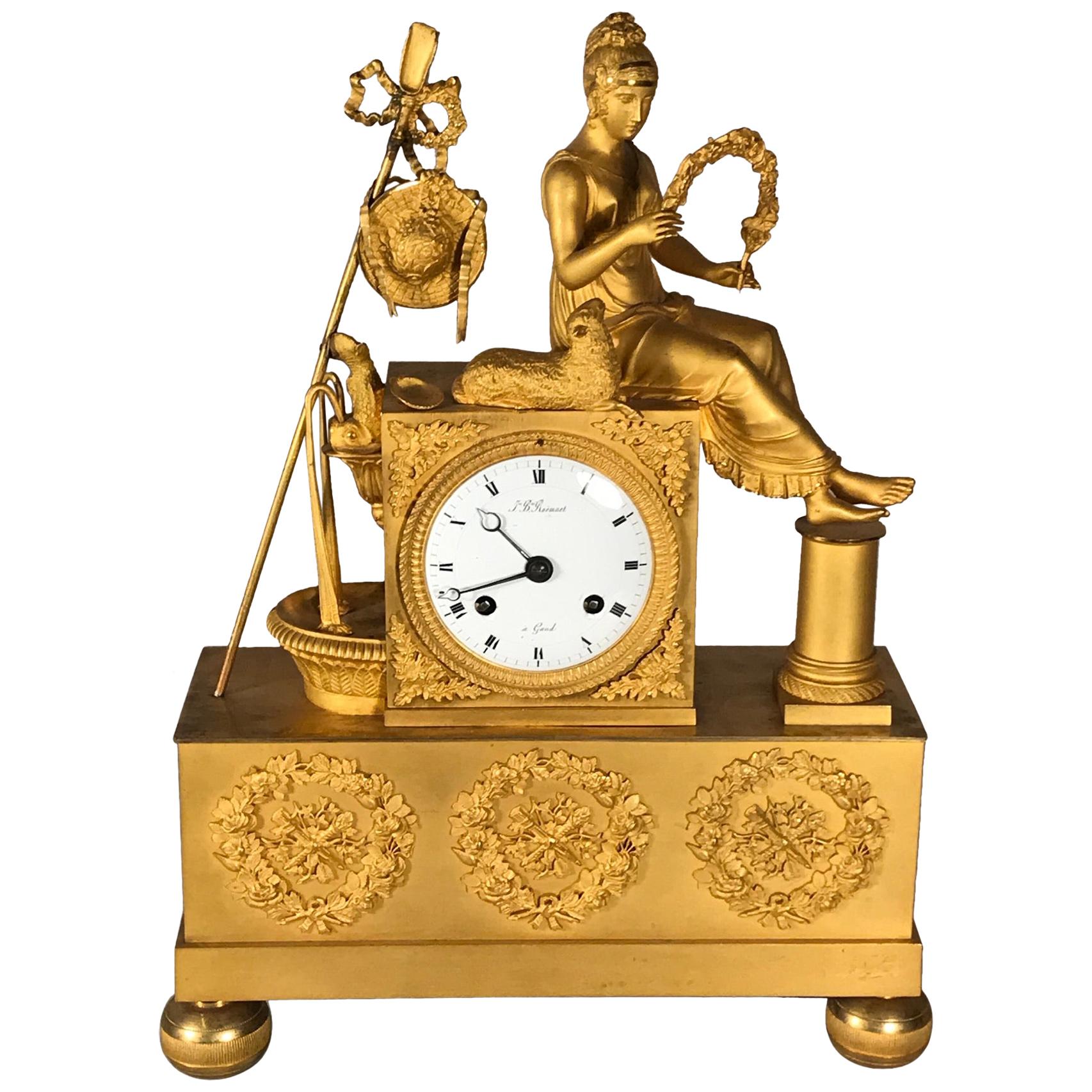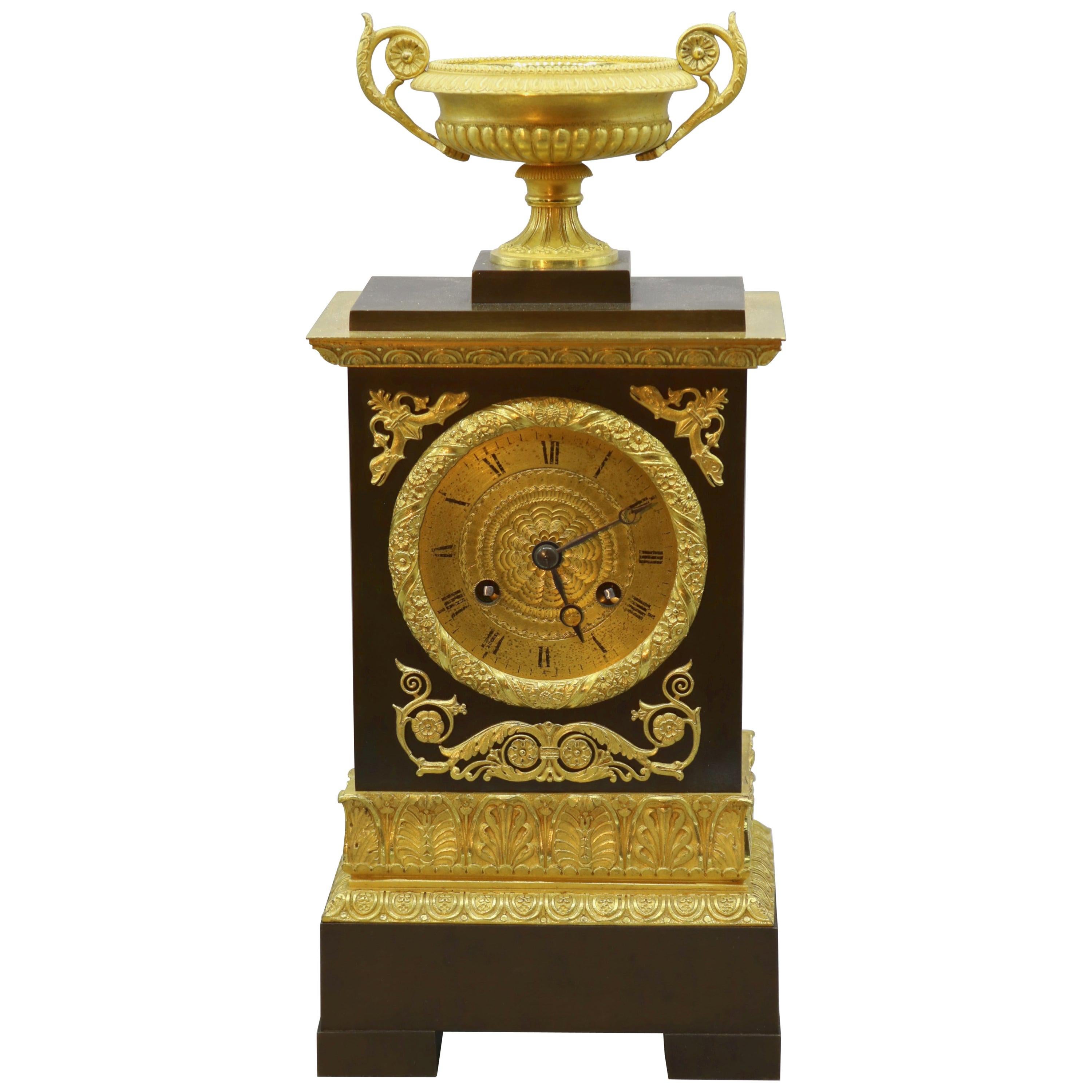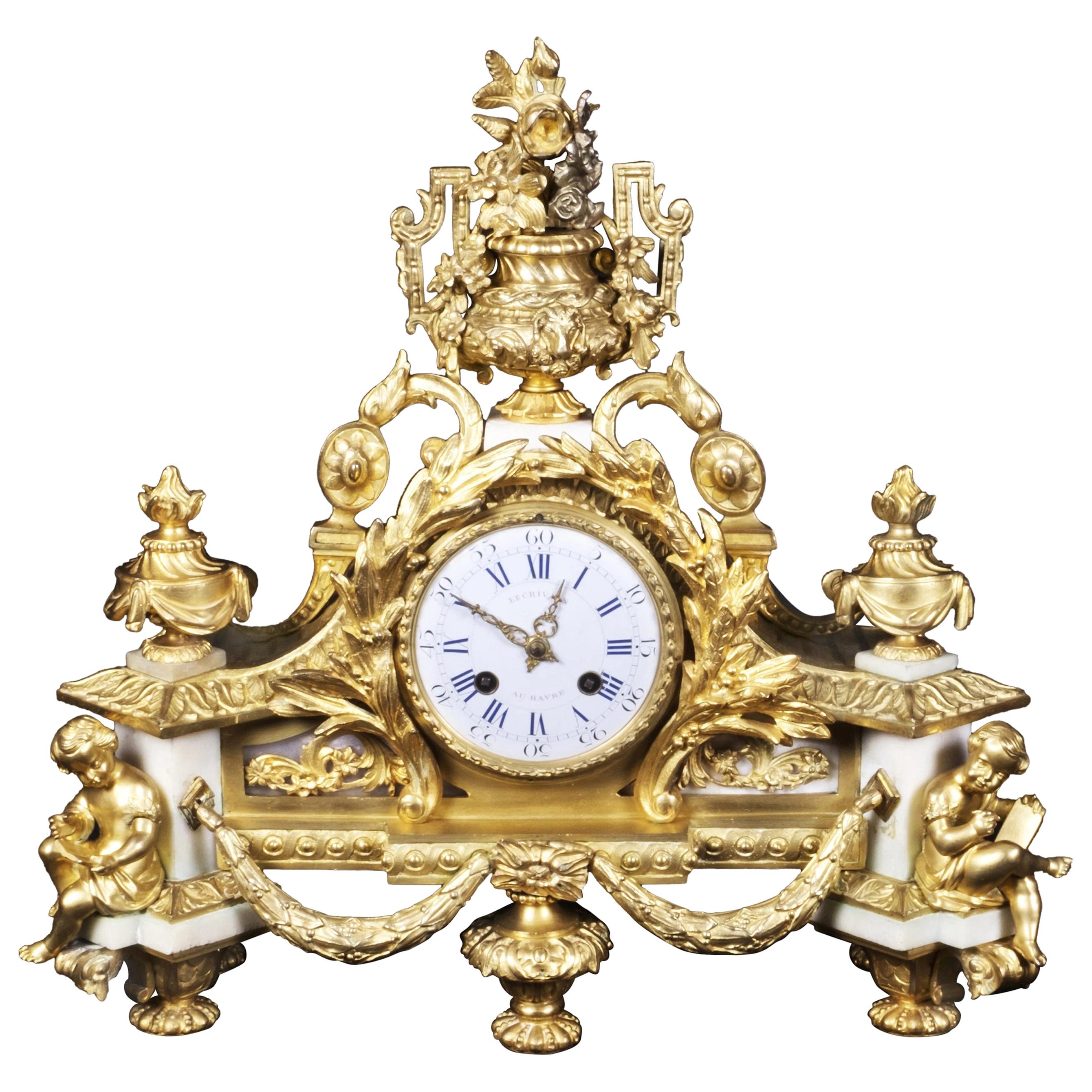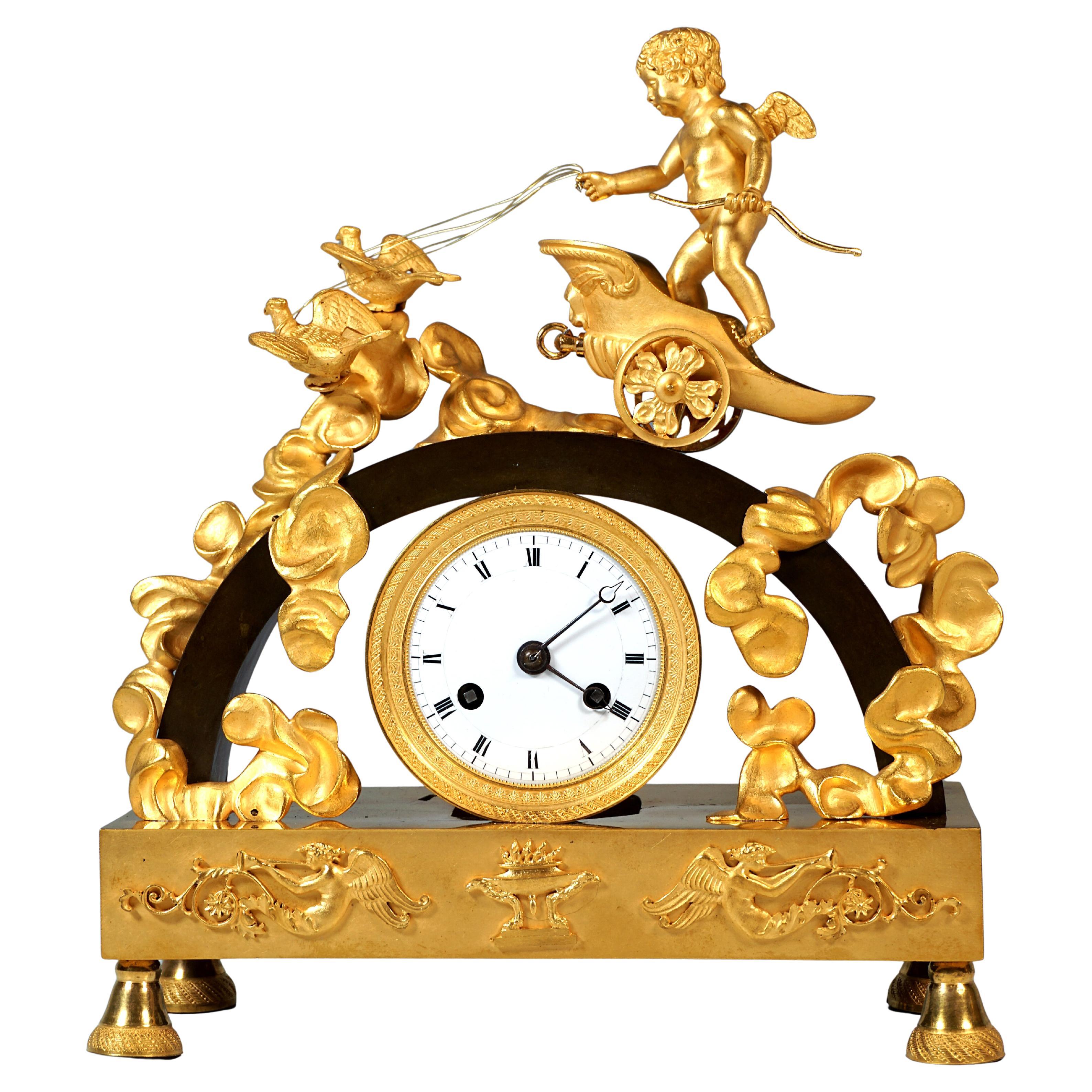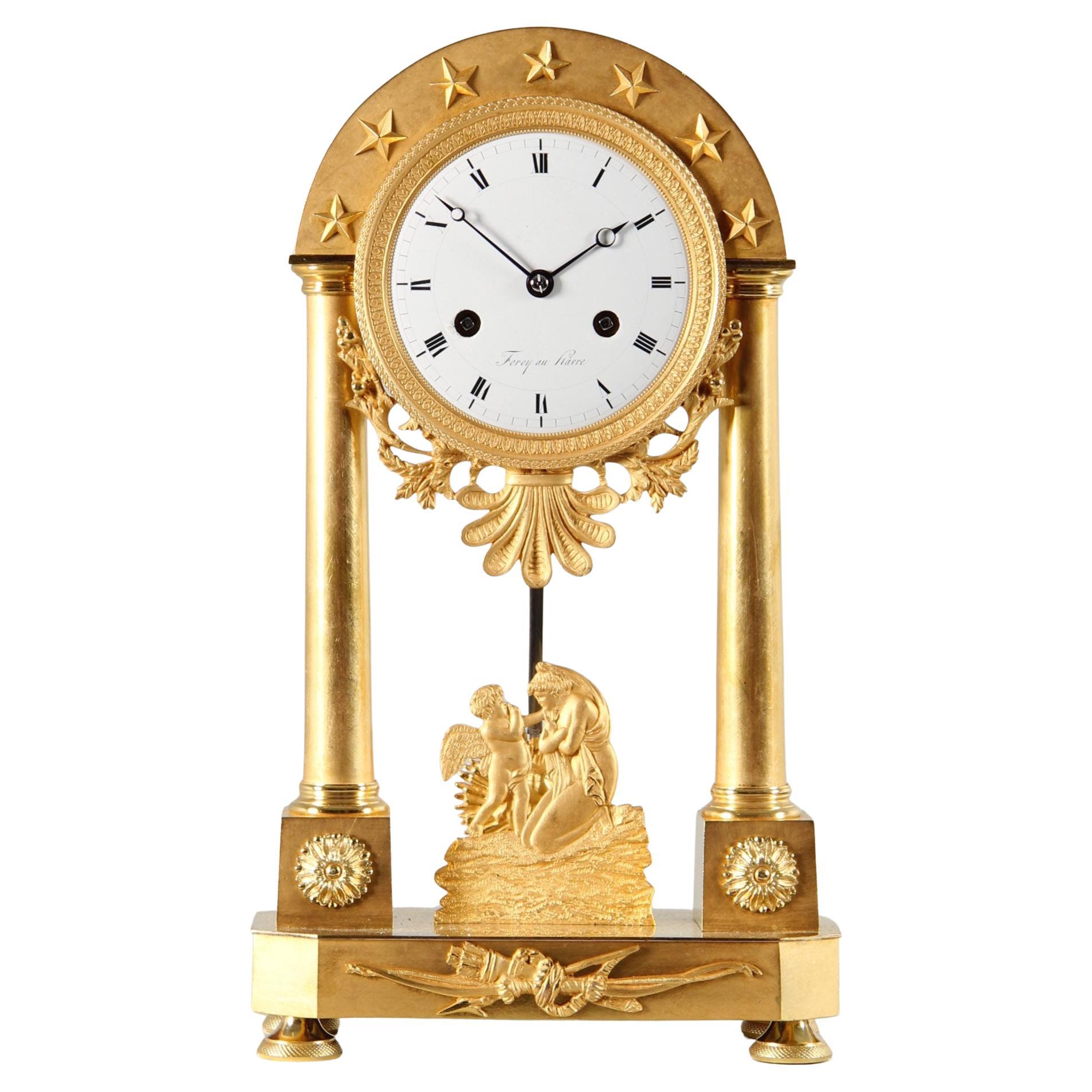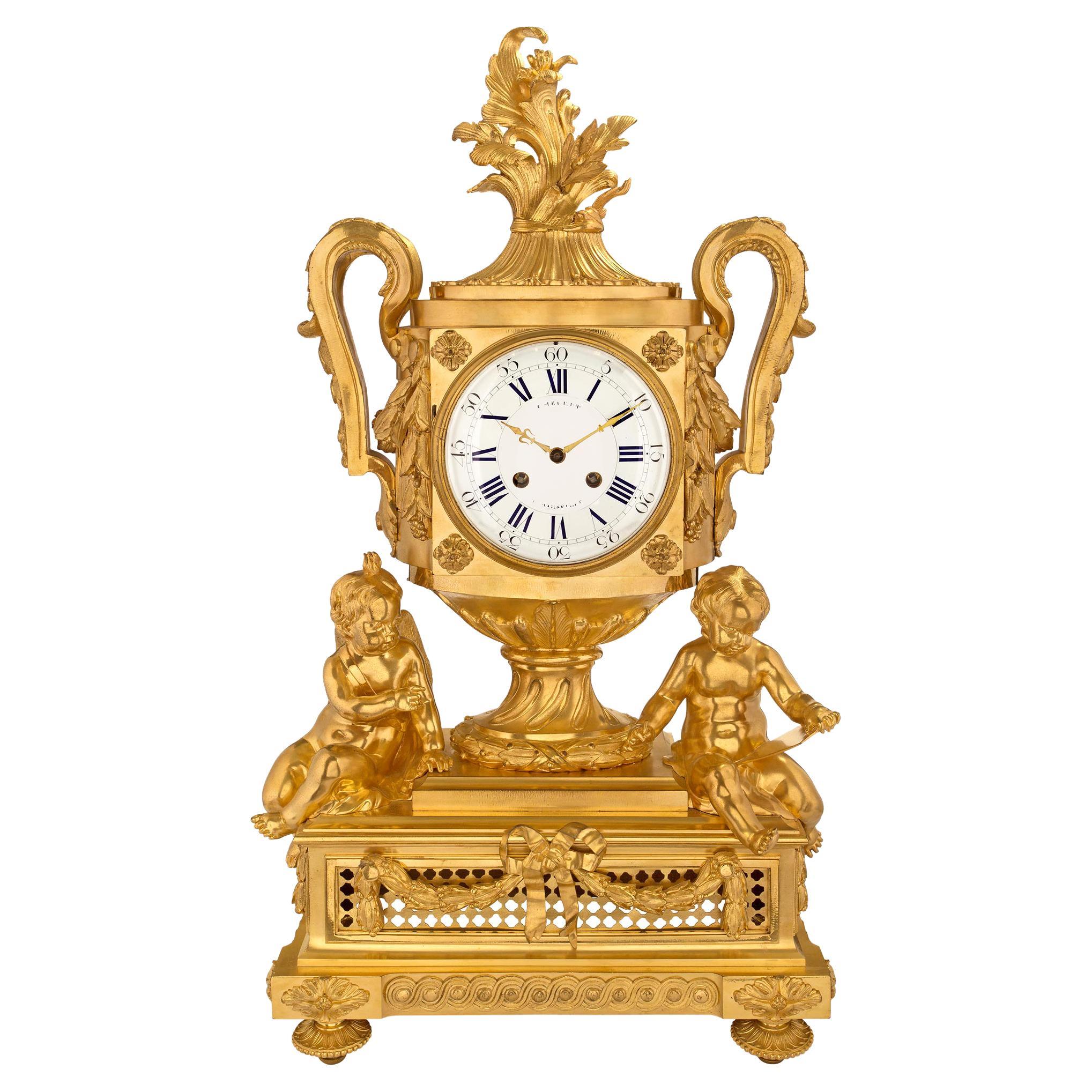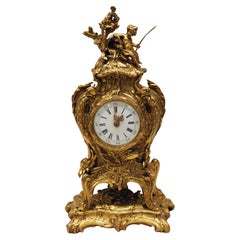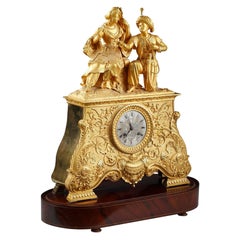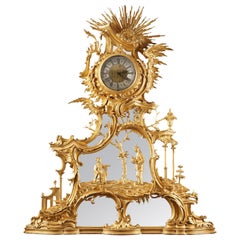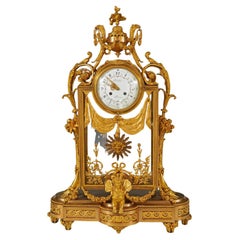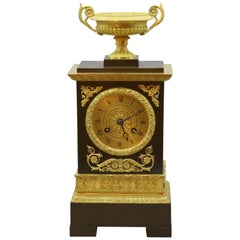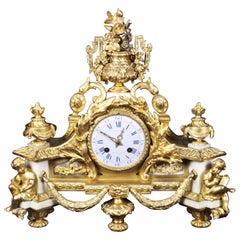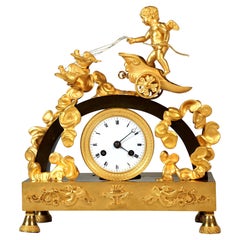Items Similar to Ormolu Clock "with a Swing", France, circa 1820
Want more images or videos?
Request additional images or videos from the seller
1 of 7
Ormolu Clock "with a Swing", France, circa 1820
$11,264.14
£8,560.68
€9,500
CA$15,805.28
A$17,247.09
CHF 8,952.26
MX$206,346.68
NOK 113,632.66
SEK 106,438.25
DKK 72,381.12
About the Item
Very fine floral and decorated Restauration period ormolu clock, figuring two baluster columns joint together by a floral arch, and topped by a crown of roses. Roman numbers indicate hours. In the arch, a woman dressed in antic style is sitting on a mobile swing suspended. Four round feet support the clock.
- Dimensions:Height: 15.75 in (40 cm)Width: 6.7 in (17 cm)Depth: 3.94 in (10 cm)
- Style:Restauration (Of the Period)
- Materials and Techniques:
- Place of Origin:
- Period:
- Date of Manufacture:circa 1820
- Condition:Wear consistent with age and use.
- Seller Location:PARIS, FR
- Reference Number:Seller: 1444/141stDibs: LU3860341952762
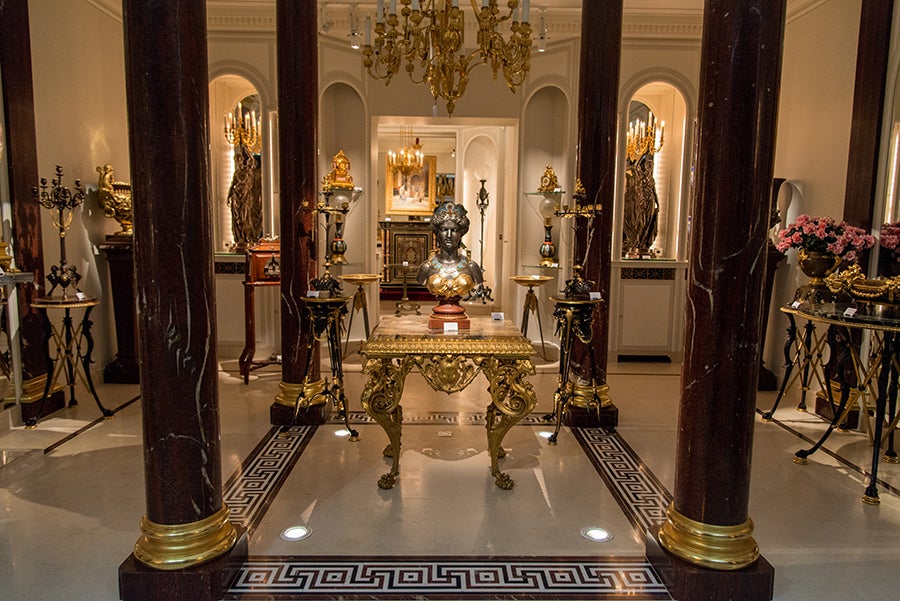
About the Seller
4.9
Gold Seller
Premium sellers maintaining a 4.3+ rating and 24-hour response times
Established in 1997
1stDibs seller since 2018
90 sales on 1stDibs
Typical response time: <1 hour
Associations
International Confederation of Art and Antique Dealers' Associations
- ShippingRetrieving quote...Shipping from: PARIS, France
- Return Policy
More From This Seller
View All"The Source" Gilt bronze Clock attr. to L. Messagé & F.Linke, France, circa 1890
By François Linke
Located in PARIS, FR
Charming clock in the shape of a Rocaille-inspired cartel in chiseled and gilded bronze. Scalloped marine-inspired decor representing a trophy with oars, dolphins, reeds and flowers ...
Category
Antique 1890s French Rococo Revival Table Clocks and Desk Clocks
Materials
Bronze, Enamel
Leila and the Giaour Gilded Bronze Clock, France, Circa 1830
Located in PARIS, FR
Dial signed Polti Frères
Measures: With base or glass: Height 61 cm (24 in.), width 51,5 cm (20.3 in.), depth 23.5 cm (9,2 in.)
Without base: Height 52 cm (20,5 in.), width 42 cm (16.5 in.), depth 12.5 cm (4.9 in.)
Important philhellenic clock in burnished and amati gilded bronze, finely chiseled, representing on the terrace a couple elegantly dressed in "the turkish style", and richly decorated with foliage, scrolls and flowers. The feet, decorated with water leaves, rest on an oval wooden base covered with a globe.
The theme of the clock comes from The Giaour, a fragment of a Turkish Tale, an English poem by Lord Byron published in may 1813 which tells the thwarted love of a Venetian, the Giaour – term by which the Turks designate infidels and especially Christians – and of Leila, a slave belonging to Hassan’s seraglio, military leader of a Turkish province. The betrayal of Leila discovered, she will be thrown into the sea and her lover will avenge her by killing Hassan, then taking refuge in a monastery.
Symbol of prestige and modernity, the decorative clocks are a reflection of the taste of the era of a wealthy bourgeoisie and may be the subject of diplomatic gifts or between individuals.
Beyond the purely decorative aspect of such objects, watchmaking in the 19th century is part of a subtle mix of political, historical and literary references.
This philhellenic movement converning the West finds a particular echo in France, one of the countries with the United Kingdom and Russia having suported the Greeks during their war of independance (1821-1830) to free oneself from the grip of the Ottoman Empire. Many clocks...
Category
Antique 1830s French Mantel Clocks
Materials
Bronze
$12,824 Sale Price
55% Off
"Chinese" Giltwood Clock After a Design by Thomas Johnson, England, circa 1860
By Thomas Johnson, London 1
Located in PARIS, FR
Important giltwood clock with a mirror background of Rococo inspiration with a rich sinuous and asymmetrical decoration representing a Chinese couple ab...
Category
Antique 1860s English Chinese Chippendale Mantel Clocks
Materials
Giltwood
G. Denière, "Pendule à cage", France, circa 1860
By Henri Picard, Guillaume Denière
Located in PARIS, FR
Large and rare Louis XVI style cage clock in chiseled and gilded bronze, rectangular in shape, highlighted with friezes of water leaves and pearls, with glass panels decorated with t...
Category
Antique 1860s French Louis XVI Mantel Clocks
Materials
Bronze
$45,649 / item
Important Five Pieces Marble and Gilded Bronze Clock Set, France, Circa 1860
By Henri Picard
Located in PARIS, FR
Marked on the dial Furet & Bon, Hrs du Roy, à Paris
Measures: Clock – Height 98 cm (38 1/2 in.), width 70 cm (27 1/2 in.), depth 25 cm (9 3/4 in.)
Candelabra – Height 116 cm ...
Category
Antique 1860s French Louis XVI Mantel Clocks
Materials
Marble, Bronze
A-E Beurdeley, « The Coronation of Science » Clock, France, circa 1880
By Emmanuel-Alfred Beurdeley
Located in PARIS, FR
Signed on the dial A. Beurdeley Paris
Mechanism signed J LEFEBVRE FILS PARIS
Rare Louis XVI style clock in mercury-gilded and patinated chiseled bronze and white marble. In the form of an arched pediment, it is decorated with four Cupids, two carrying a garland of flowers highlighting the dial, and two others symbolizing the coronation of Science. The molded base in white marble, with a double recess, is decorated with a ribboned torus, a frieze of ribboned oak leaves and interlacing, and rests on six flattened ball feet.
Related work :
In 1774, the bronze-caster Robert Osmond (1711-1789) designed a first model known as “architectural drawing” illustrating The Coronation of Science. Also called The Children of France, it is decorated with a putti crowning a young girl drawing with a compass and delivered to Versailles by Lépine, clockmaker to the King since 1762, for the apartment of Madame Royale in the Princes’ Wing, on December 28, 1778. (see photo attached)
This clock is described in the inventory of Versailles clocks...
Category
Antique 1870s French Louis XVI Mantel Clocks
Materials
Marble, Bronze
You May Also Like
Ormolu Mantel Clock, Belgium, circa 1810-1820
Located in Belmont, MA
Empire ormolu mantel clock, Belgium, circa 1810, Signed "J.B. Romaet a Gand". Decorated with a shepherd scene. Strikes the hour and half hour on a bell. With enamel clock face and si...
Category
Antique 1810s Belgian Empire Mantel Clocks
Materials
Ormolu
Bronze and Ormolu Clock, 19th Century, French, Silk Suspension Striking
Located in London, GB
An early 19th century French bronze and ormolu eight day silk suspension striking clock contained in ornate case surmounted by well-cast and gadrooned urn...
Category
Antique Early 19th Century French Regency Mantel Clocks
Materials
Bronze, Ormolu
French Ormolu Mantel Clock pendulum France, Mid-Late 19th Century
Located in Lantau, HK
A French ormolu mantel clock
French, mid-late 19th century
Measres: Height 37 cm, width 39 cm, depth 13.5 cm.
A late 19th century French gilt-bronze (ormolu) and marble mantel clock ...
Category
Antique Mid-19th Century French Mantel Clocks
Materials
Marble, Ormolu
$3,900 Sale Price
50% Off
French Museum Ormolu Mantle Clock, Pendule 'Au Char', Thomire, Paris, Ca 1820
By Pierre-Philippe Thomire
Located in Vienna, AT
Exquisite mantel clock made of fire-gilded and patinated bronze from the early 19th century:
Structure in the form of a rectangular gilded base on four conical feet with chiselling, ...
Category
Antique 1820s French Empire Table Clocks and Desk Clocks
Materials
Bronze
Early 19th Century French Mantel Clock, signed Ferey au Havre, Ormolu
Located in Greven, DE
Small mantel clock with bas-relief
France
Bronze, enamel
early 19th century
Dimensions: H x W x D: 33 x 19 x 9 cm
Description:
Antique, fire-gilt portal clock with figurative, Gre...
Category
Antique Early 19th Century French Empire Mantel Clocks
Materials
Bronze, Enamel, Ormolu
French 19th Century Louis XVI St. Ormolu Clock Signed Cheuret À Marseilles
Located in West Palm Beach, FL
An extremely decorative and large scale French 19th century Louis XVI st. ormolu clock signed Cheuret à Marseilles. The clock is raised on topie feet below a straight frieze with pro...
Category
Antique 19th Century French Louis XVI Mantel Clocks
Materials
Ormolu
More Ways To Browse
Antique Swing
Antique Swing Furniture
Antic Antique
Antique Round Clock
Ormolu Figural Clock
Sevre Panels
Victorian Brass And Marble
Clock Finials
Clock Parts
Red Antique Clock
18th Century Clock Marble
Napoleon Marble Clock
Putti Clock
Antique Tiffany Clocks
Psyche Bronze 19th Century French
Antique Clock Finials
Antique Clock Pendulum Clocks
French 1890 Mantel Clock
